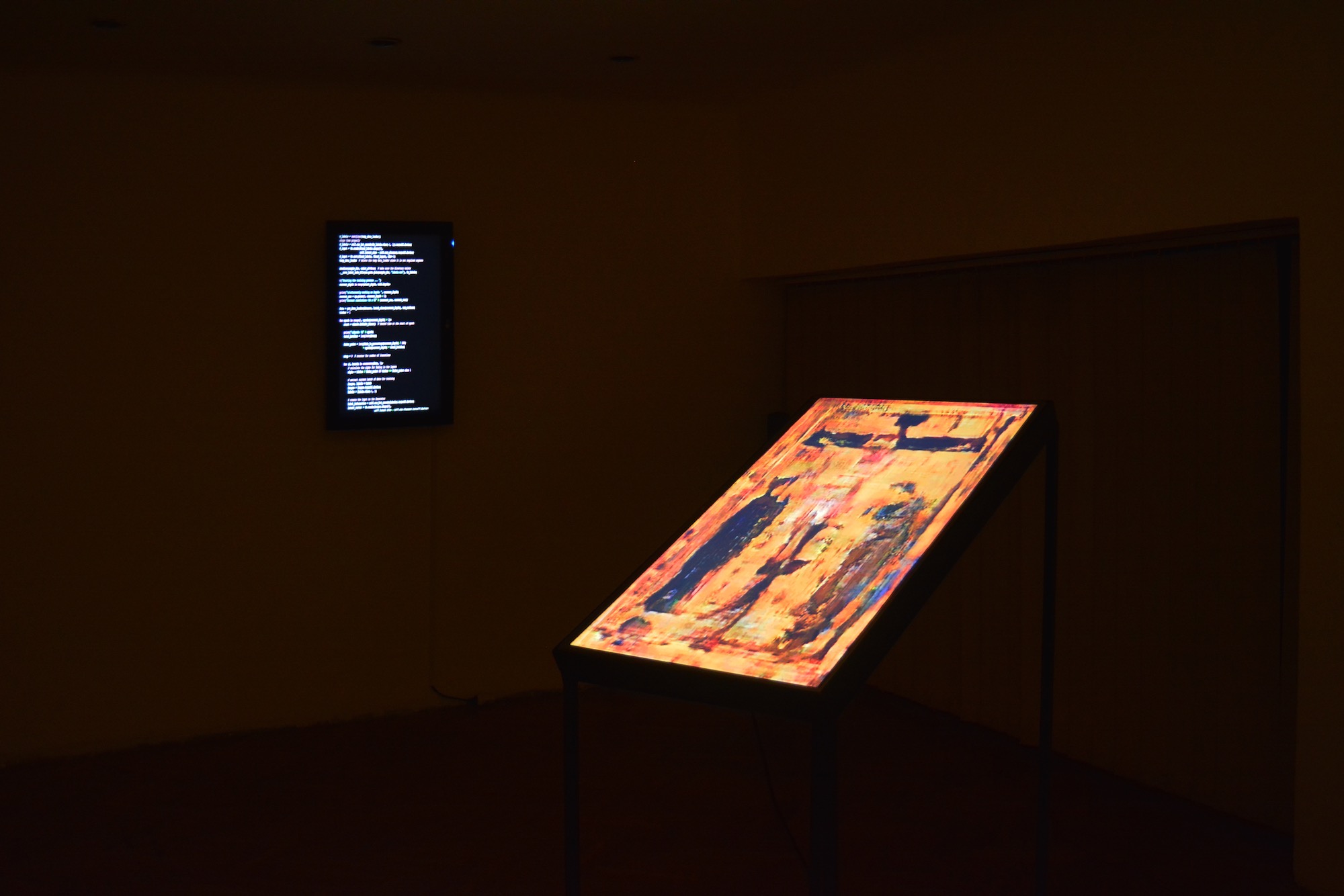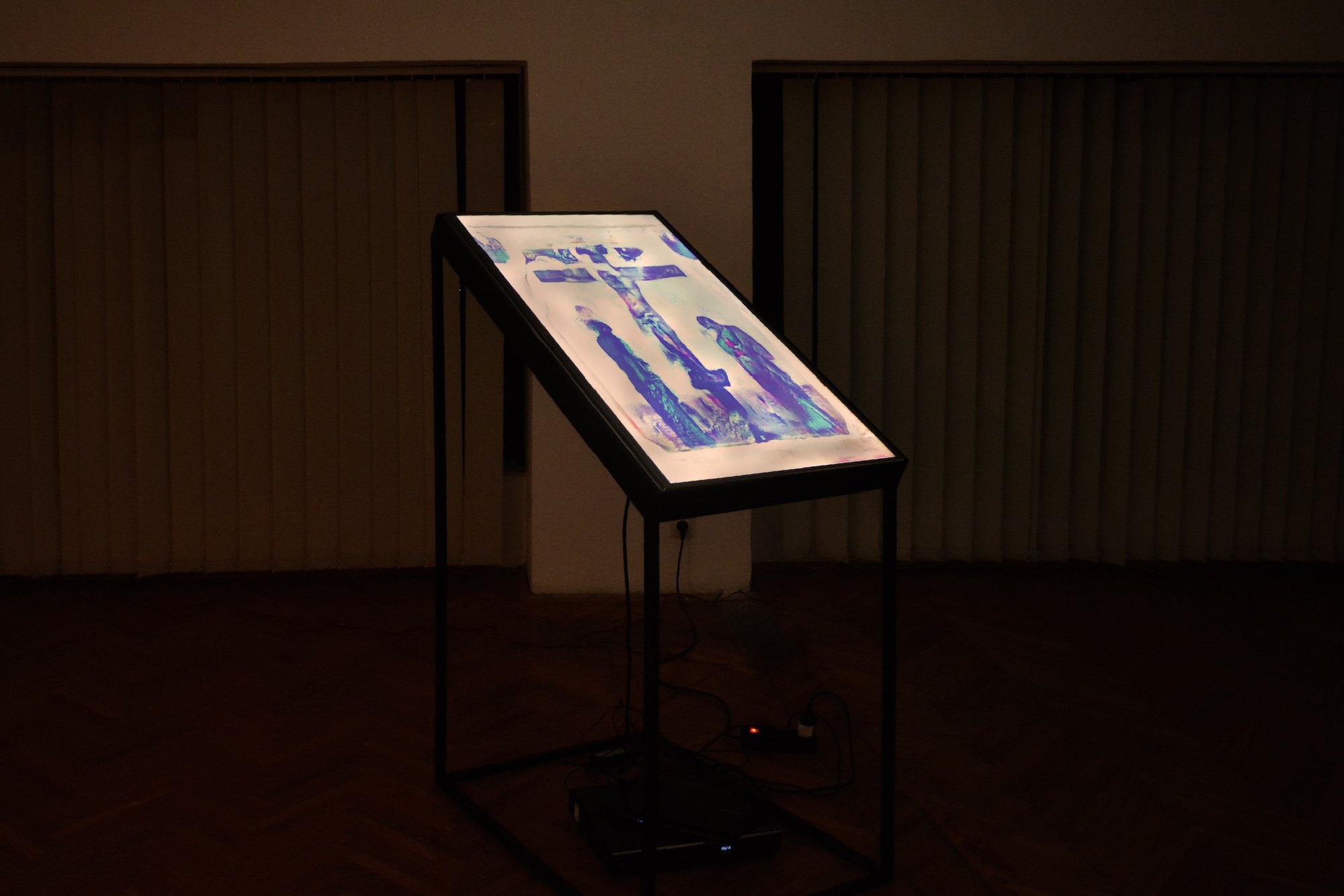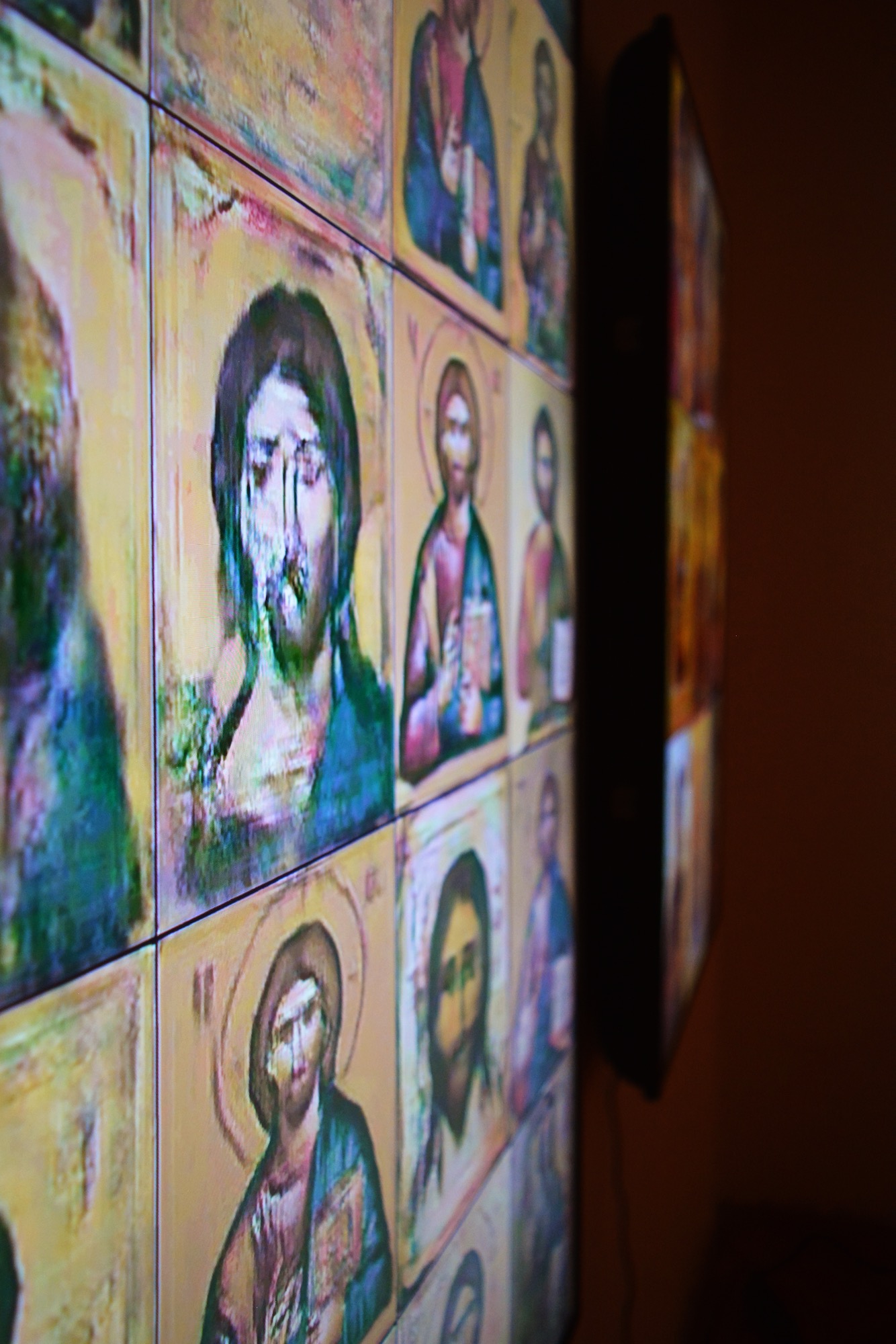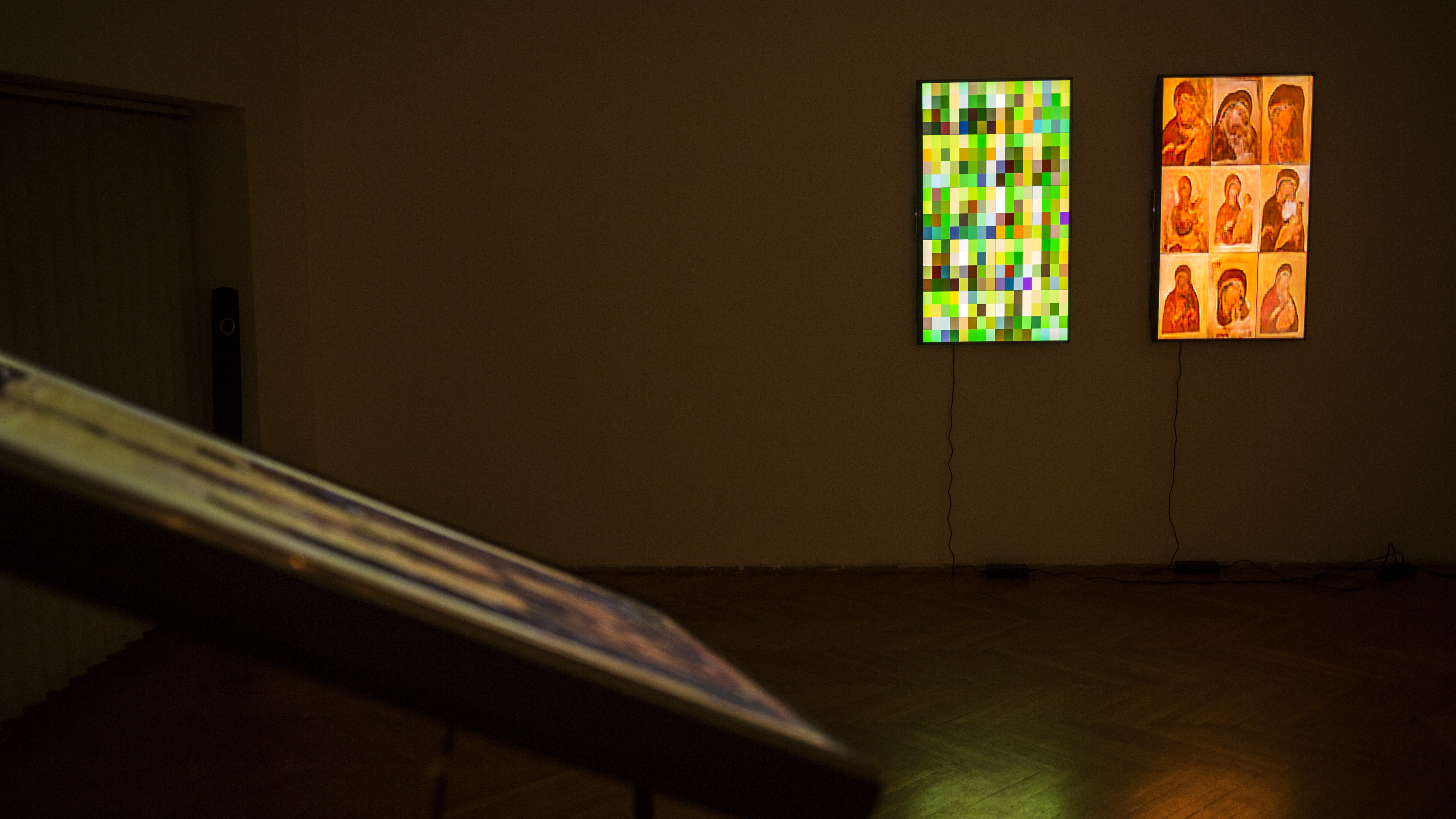








DIGITAL PRAYER
[2020]
Remont Gallery, Belgrade
Installation view
Project supervisor> Uroš Krčadinac
Programming> Miloš Trifunović, Mateja Stevanović, Jacques Laroche
Sound Composer > Marija Šumarac
Supported by> Faculty of Media and Communication, Belgrade
Centre for the Promotion of Science, Belgrade
The Digital Prayer project is using one of the computer vision methods for image generating, with final visual output that resembles an orthodox icon. Through pixel generating using Machine Learning techniques and Generative Adversarial Neural Networks, a relation has been established between the canonical structure of an Orthodox icon and the image artificially created through computer program.
A computer program was created and a database of about 4000 digital reproductions of orthodox christian icons was collected, on the basis of which the computer learns to create a completely new image.
In relation towards geometric and mathematical order of the elements inside of the digital reproduction of the orthodox icon, it is expected that, through statistical operations, the computer will we able to repeat and reproduce the elements of canonical imagery of visual language of the icon, which from the viewers perspective would be perceived as symbolical elements.
When all of the aspects of the virtual environment of the digital image in the age of internet are taken into account, this projectional form of appearance on the surface such as the computer interface, it could be claimed that every phenomenon can be translated onto that projective surface. Icon has had the same purpose during medieval times - as a window towards immaterial, projective, spiritual. The image that is seen is just a visualisation of the code and data, which leads us to the analogy proposed by Boris Groys: “The digital image is a visible copy of the invisible image file, of the invisible data. In this respect the digital image is functioning as a Byzantine icon—as a visible copy of invisible God.”
The goal of this artistic project is the demystification of the power of the AI. What used to be the God in feudalistic medieval times, it is AI in today’s neoliberalism. Through direction of algorithmic processes towards imitation of the language of the icon, two visual interfaces oppose to each other - virtual world of digital image, and the traditional handcrafted Orthodox icon.